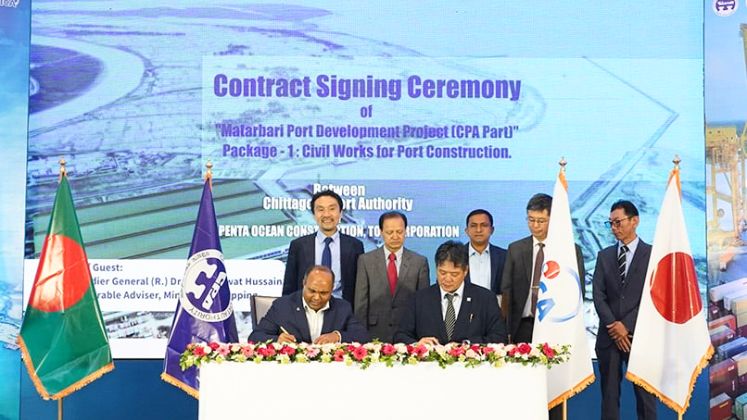
In a significant move to boost its maritime infrastructure, Bangladesh has signed an agreement with two leading Japanese companies, Penta-Ocean Construction Co Ltd and TOA Corporation for the development of the country’s first deep sea port at Matarbari, located in the Bay of Bengal. The signing ceremony took place on 22nd April in Dhaka, marking a major milestone in the nation’s port development efforts.
The event was graced by several high-level dignitaries, including the Chief of Naval Staff, the Senior Secretary of the Ministry of Shipping, senior diplomats from the Japanese Embassy, and representatives from the Japan International Cooperation Agency (JICA). The port development will be jointly funded by JICA and the Chittagong Port Authority (CPA).
Brigadier General (Retd) M Sakhawat Hossain, advisor for Shipping and Labour and Employment Affairs, highlighted the far-reaching impact of the project. He described the port as a “strategic game-changer” that would not only improve trade efficiency but also contribute significantly to Bangladesh’s economic growth. Designed to handle large cargo ships of up to 100,000 deadweight tonnage (DWT), the facility is expected to relieve pressure on existing ports and offer improved access to industrial zones in Cox’s Bazar and Moheshkhali.
The first phase of the project, known as “Package 1,” will include the construction of a 300-meter multipurpose berth and a 460-meter container berth, suitable for vessels measuring up to 350 meters. Additional infrastructure components include port terminals, operational buildings, access roads, sea walls, utility systems, dredging work, land development, and solar power installations to support sustainability goals.
Once completed, the Matarbari Deep Sea Port will feature approximately 5,100 ground slots for container storage and the capability to dock ships with a 14.5-meter draft and up to 300 meters in length, handling an estimated 8,200 twenty-foot equivalent units (TEUs) per vessel. Operational capacity is expected to reach between 600,000 and 1.1 million TEUs annually by 2029, with future expansion targeting 2.2 to 2.6 million TEUs by 2041.
The Matarbari Deep Sea Port is poised to play a vital role in transforming Bangladesh into a regional logistics and transshipment hub, strengthening the nation’s position in global trade networks.






